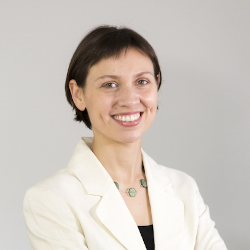|
Catherine Mas is a 2023-2024 Consortium NEH Fellow and Assistant Professor in the Department of History at Florida International University.
At the turn of the twentieth century, apes were on the precipice of becoming laboratory animals. Scientists were eager to exploit their evolutionary kin: biomedical researchers to better understand disease and develop breakthrough medicines; psychologists to establish the genetic basis of the mind, social relations, and behavior, gathering knowledge to apply in the engineering of human society. However, the primate laboratory remained for decades a mere aspiration. Not only was it expensive to acquire captive apes; it was extremely difficult to keep them alive and healthy in captivity—let alone healthy enough to reproduce. In fact, in the late nineteenth century, the eminent French physical anthropologist Paul Broca declared that chimpanzees were physically unable to reproduce in captivity. That is precisely why the scientific community rejoiced when they learned the news in 1915—reported by none other than Broca’s student, the Cuban anthropologist Luis Montané—that a chimpanzee was born in captivity. This was the first recorded captive chimpanzee birth in history, and scientists learned details of the event in Montané’s scientific publication, “Un Chimpancé Cubano” (or in English, “A Cuban Chimpanzee”). As the title indicated, this unprecedented event occurred in Cuba, and specifically, at the home of ape collector Rosalía Abreu on the outskirts of Havana. Through this breeding success, she overcame a seemingly insurmountable obstacle facing primate researchers—a first step towards realizing the promise of the primate laboratory. Montané’s publication quotes from the various letters Abreu received from prominent scientists outside of Cuba, including Pasteur Institute researcher Élie Metchnikoff, New York Zoological Society director William Hornaday, and Harvard psychologist Robert Yerkes. Despite this scientific feat, Abreu remains at the margins of historical scholarship—sometimes appearing in accounts of primatology that make passing reference to a Cuban woman with an unusual hobby. My book project, “Sweet Captivity: A History of Primate Science from Cuba to the United States,” does not aim simply to recover Abreu’s contributions to science, but also to shake up conventional historical narratives by centering neither the wildlife environments where ape specimens originated nor the laboratories and museums where they ended up. Using the vantage point of Abreu’s Havana, it assembles a constellation of sites that starts with Abreu and her captive apes, following them from her home to the laboratory, to theme parks and natural history museums. It shows how science relied on lay worlds and nonhuman relationships, which shaped new conceptions of the “human,” the negotiation of exploitation and ethics, and debates about the limits of modern science. As a 2023-24 NEH Fellow at the Consortium for History of Science, Technology, and Medicine, I spent time at various archives that help illuminate the intellectual and cultural network to which Abreu and her animals were connected. A major source of historical evidence on Abreu’s work derives from the papers of the scientists with whom she collaborated. Among the most significant of her interlocutors was Robert M. Yerkes, the comparative psychologist and eugenicist who spent the summer of 1924 conducting research on her ape collection in Cuba. At the Rockefeller Archive Center, I explored the records of Rockefeller Foundation programs and officers with whom Yerkes corresponded about his proposal to establish an American primate research station in Cuba. These records pointed me towards a larger landscape of philanthropic support in the making of primate science, placing Abreu and her sugar-derived fortunes alongside the fortunes of Gilded Age American industrialists. Moreover, they illuminate the afterlives of Abreu’s primate collection, as the Rockefeller Foundation supported the establishment of the Yale Laboratories for Primate Biology, founded by Yerkes with thirteen of Abreu’s chimpanzees, which he inherited when Abreu died in 1930. Collections at the American Philosophical Society also brought to my attention the discourses and practices of American scientists in the inter-war period, who were experimenting on apes with particular political visions of the future of “humanity.” Collections at Yale’s Medical Historical Library allowed me to trace the journeys of Abreu’s apes from Havana to New Haven in the 1930s, serving the research program of neurophysiologist John Fulton, who aimed to use primates in his cutting-edge research on cortical function. My research examines how his surgical experiments on Abreu’s apes comprise a significant departure from her previously enforced standards for ethical research on nonhuman animals. The Consortium also introduced me to a vibrant community of scholars, whose engagement with my work has led me to new insights. For example, upon delivering a paper on my work-in-progress at one of the weekly fellows’ workshops, I received valuable feedback from a former fellow on the ways in which I can further expand my gender analysis, given Abreu’s position as an “amateur naturalist” in an era when women were largely excluded from professional science and often disregarded as unreliable knowers. Another former fellow, whose research focuses on the Bronx Zoo, pointed my attention to some key primary sources regarding Abreu’s connection to the work of zoologists and zookeepers in New York City. I consider these kinds of interactions invaluable to the progress of my research and am grateful for the Consortium’s intellectual community building efforts, which made them possible. By facilitating access to archives and scholarly resources, the Consortium has provided me with crucial momentum that I will channel into the next phase of the project, which involves drafting chapters of the book manuscript. In completing the bulk of planned archival research I’ve gained a clearer vision of the book’s larger narrative and contributions, also enabling me to secure additional funds from the National Endowment for the Humanities and the American Council of Learned Societies to devote the next two years to full-time writing. I will likely return to the Consortium’s member institutions for follow-up visits, while taking advantage of the organization’s excellent ongoing programming to nourish my research process. |
